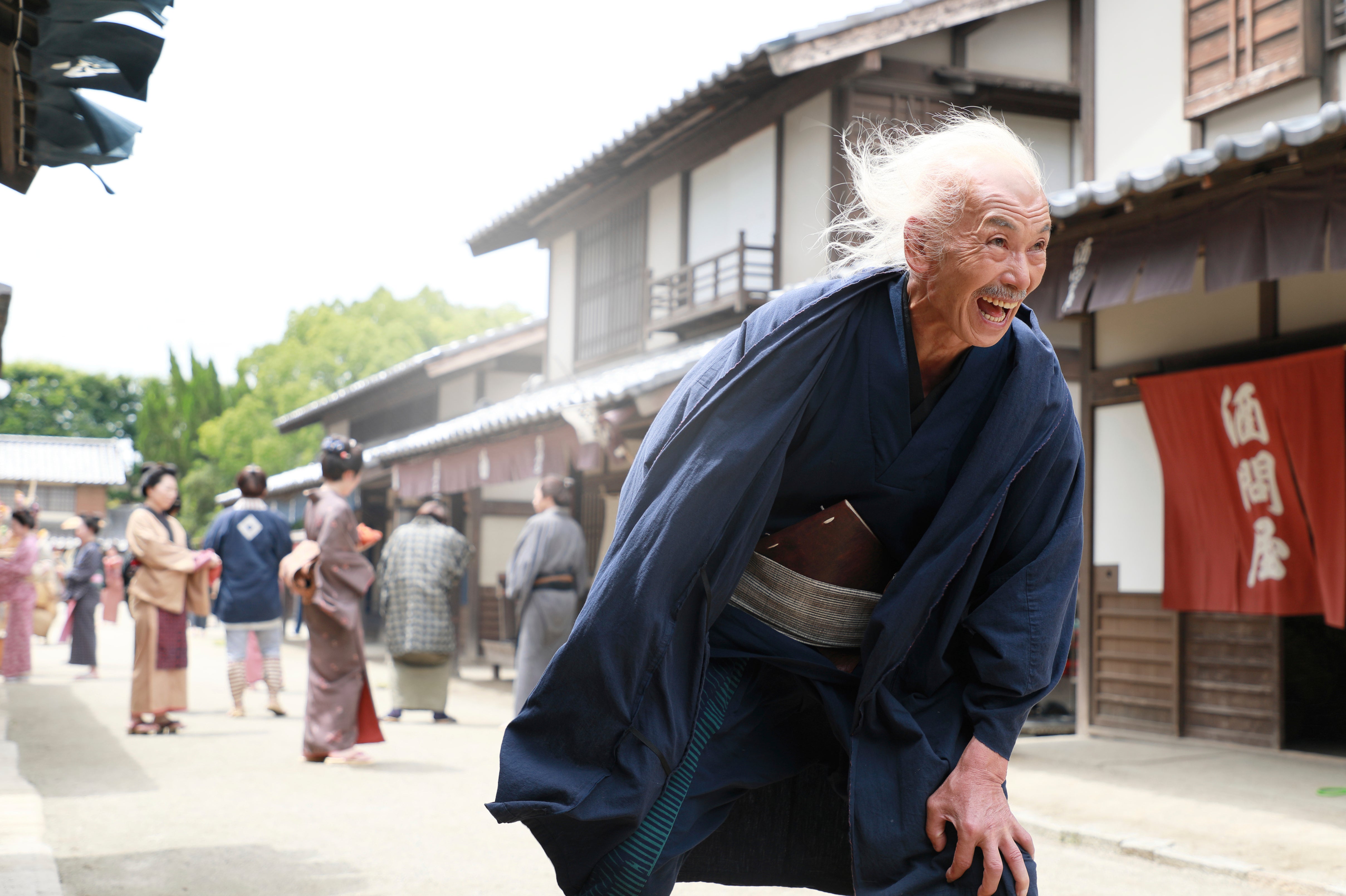Actors connect in 'subconscious' to play young, old Hokusai
A new film portraying the life of Edo-era painter and printer Hokusai features the artistry of two modern-day Japanese actors

Your support helps us to tell the story
From reproductive rights to climate change to Big Tech, The Independent is on the ground when the story is developing. Whether it's investigating the financials of Elon Musk's pro-Trump PAC or producing our latest documentary, 'The A Word', which shines a light on the American women fighting for reproductive rights, we know how important it is to parse out the facts from the messaging.
At such a critical moment in US history, we need reporters on the ground. Your donation allows us to keep sending journalists to speak to both sides of the story.
The Independent is trusted by Americans across the entire political spectrum. And unlike many other quality news outlets, we choose not to lock Americans out of our reporting and analysis with paywalls. We believe quality journalism should be available to everyone, paid for by those who can afford it.
Your support makes all the difference.A new film portraying the life of Edo-era painter and printer Hokusai features the artistry of two modern-day Japanese actors
Yuya Yagira, who won a Cannes Best Actor award for his role in Hirokazu Koreeda’s “Nobody Knows,” plays the younger Hokusai. Internationally acclaimed dancer Min Tanaka portrays the older Hokusai.
Although Yagira and Tanaka don’t particularly look alike, their intense expressions are so similar, viewers will have no problems accepting they’re the same person.
“Hokusai” is the closing film of the Tokyo International Film Festival, ending Monday. The festival featured online events as well as real-life film screenings with social distancing for the pandemic.
Tanaka and Yagira talked at length just once, and Tanaka had suggested they don’t try too hard to work at portraying the same character, and instead just follow their own “subconscious.”
“I chose to believe in the script, the director and Yuya Yagira the actor, and believe they have already prepared what is to be inside of me. And that is enough,” Tanaka said, stressing that mimicking Yagira’s portrayal of his character as a youth wouldn’t be particularly interesting.
Their interpretations of Hokusai underline the determination of artists to pursue their voice, a calling that appears to lie deeply in Tanaka and Yagira, as well as in Hokusai.
Yagira sees Hokusai as a feudal-era Banksy, the British street artist, and was excited to be in a samurai film with no sword fighting scenes, featuring an artist with whom he could identify.
“There are common feelings, such as wanting to be recognized but not getting recognized, basic feelings like jealousy or envy, or we want to be better,” he said. “We decided to create our own Hokusai as a young man.”
The story traces Hokusai’s struggles, enduring economic, psychological and artistic hardships, amid the cruel, oppressive social backdrop of feudal Japan. The struggles culminate in Hokusai’s arriving at the spectacular waves of his famous woodblock print in the “36 Views of Mount Fuji” series.
Yagira said he suggested the scene, in which a youthful Hokusai in despair walks into the ocean, almost giving up, but returns and starts drawing in a frenzy on the sand.
“Why did he feel so much for waves?” he said. “I suggested maybe he had once given up on life. If you had that kind of extreme passion, then you will find the energy to create such a world-famous painting.”
The scene that’s key for Tanaka is when the older Hokusai revels in arriving at his own shade of blue.
“That scene is about achieving that blue, the color that I love, and so it is with sheer joy I go into the rain. And I want to become that color, making my whole body that color,” Tanaka said with a smile, initially denying playfully that he was dancing.
“The director had asked me that, if a dance becomes born, then I should create dance. It worked out fine. Yes, I danced,” he said.
Hajime Hashimoto, the director, believes movies have long lived in “the world of darkness” — known as theaters — despite the challenges of various times.
“That place where strangers huddle close, cry, laugh, get outraged and have fun together," he said. “‘Hokusai’ brings together all our feelings for that place.”
___
Yuri Kageyama is on Twitter https://twitter.com/yurikageyama